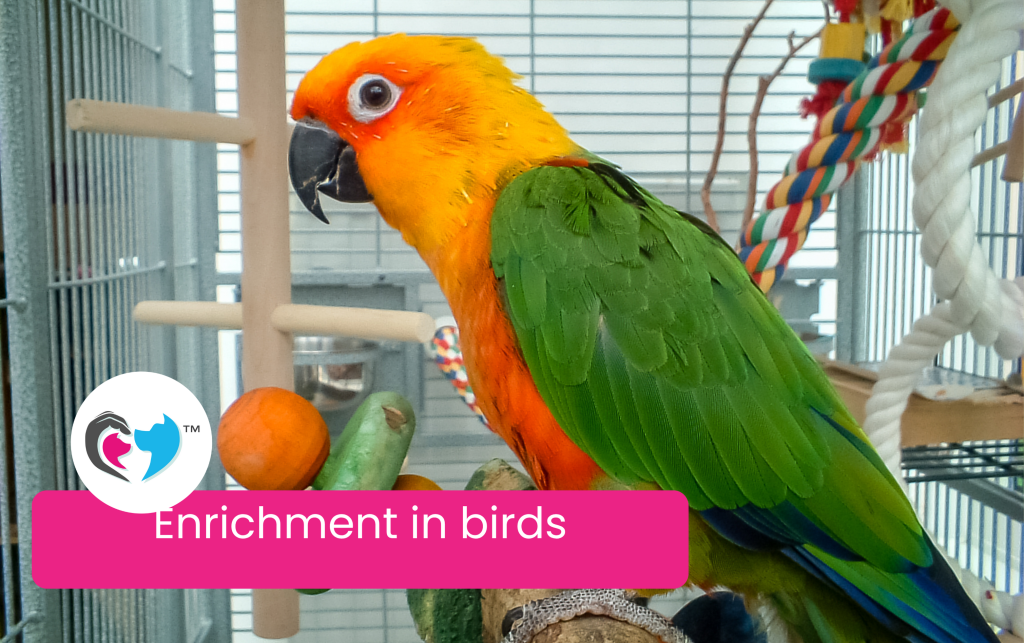

Environmental enrichment plays a vital role in promoting the physical, mental, and emotional health of companion birds. In the wild, birds spend much of their day flying, foraging, socialising, and problem-solving. In captivity, these natural behaviours can be severely limited — leading to frustration, stress, feather plucking, or other behavioural issues (Meehan & Mench, 2007). Providing meaningful enrichment helps bridge this gap, giving birds the opportunity to express their natural instincts and maintain a positive welfare state (Young, 2013).
The Importance of Enrichment
Birds are highly intelligent, curious, and social animals. Without adequate stimulation, they can become bored or anxious, which may manifest as repetitive movements, excessive vocalisation, or aggression (van Zeeland et al., 2009). Enrichment therefore goes beyond entertainment — it is a fundamental aspect of welfare that reduces stress and encourages natural behaviour patterns such as foraging, exploration, and problem-solving (Seibert, 2006).
Effective enrichment programs should aim to:
Types of Enrichment
1. Foraging Enrichment
In the wild, birds spend up to 70% of their day searching for food (Meehan et al., 2004). Recreating this in captivity is essential for their mental wellbeing.
Shop-bought options:
DIY ideas:
2. Physical and Exercise Enrichment
Regular movement supports cardiovascular health and prevents obesity and muscle atrophy.
Shop-bought options:
DIY ideas:
3. Sensory Enrichment
Stimulating a bird’s senses helps to prevent boredom and increase curiosity.
Shop-bought options:
DIY ideas:
4. Social and Cognitive Enrichment
Many parrot species and flock birds are naturally social and thrive on interaction.
Shop-bought options:
DIY ideas:
Safety First
Not all household materials are safe for birds. Avoid zinc, lead, toxic woods (like oak or cedar), small loose parts, or fabrics that can be ingested. Always monitor birds with new enrichment items to ensure safe use (Jordan & Tetrick, 2002).
Enrichment is not a luxury — it is an essential component of good welfare for captive birds. Whether using shop-bought products or creative DIY solutions, providing birds with opportunities to explore, forage, and interact can prevent behavioural problems and enhance overall quality of life. A varied enrichment routine, tailored to each bird’s species, personality, and preferences, ensures happier, healthier companions (Meehan & Mench, 2007).
References